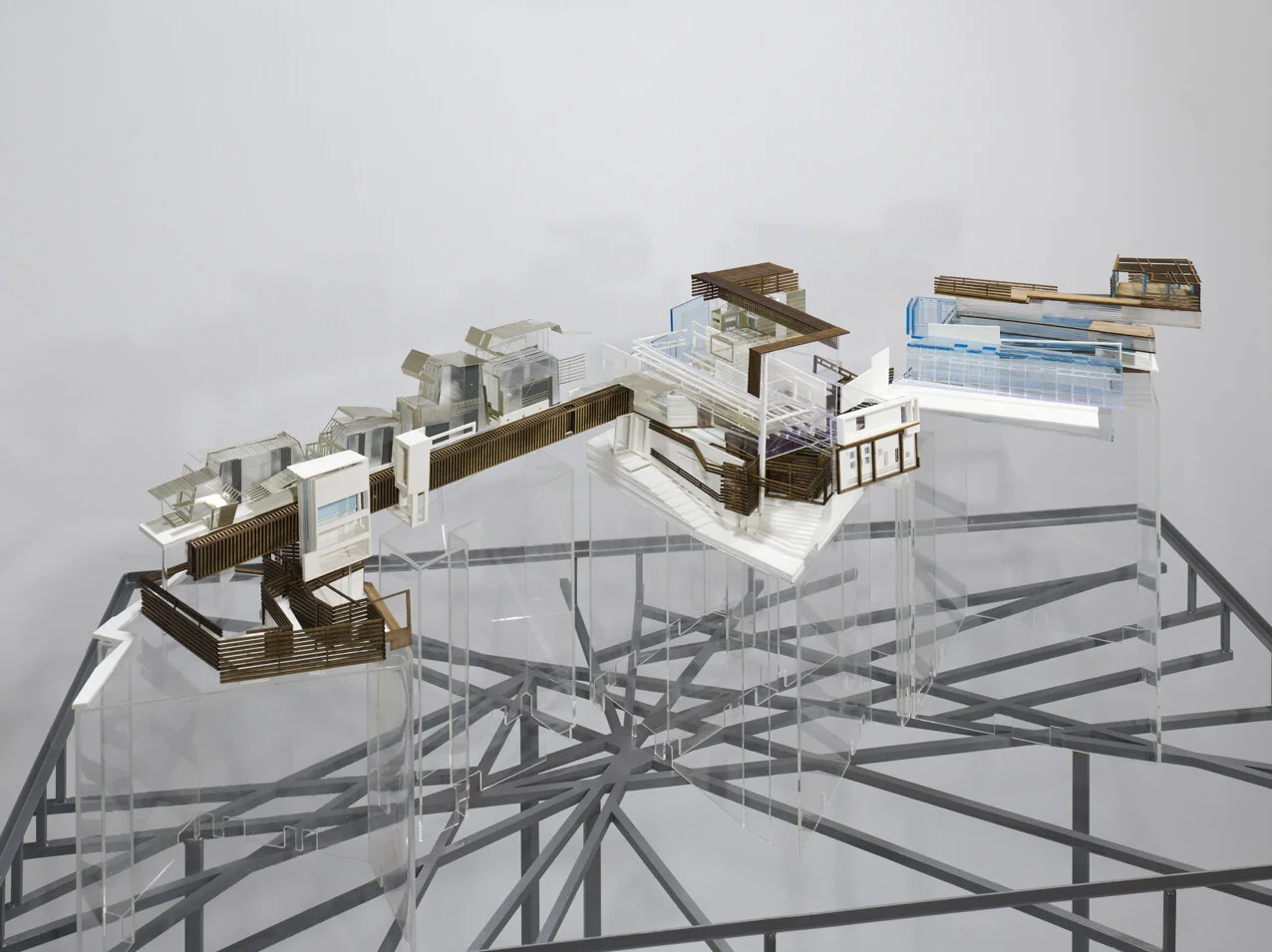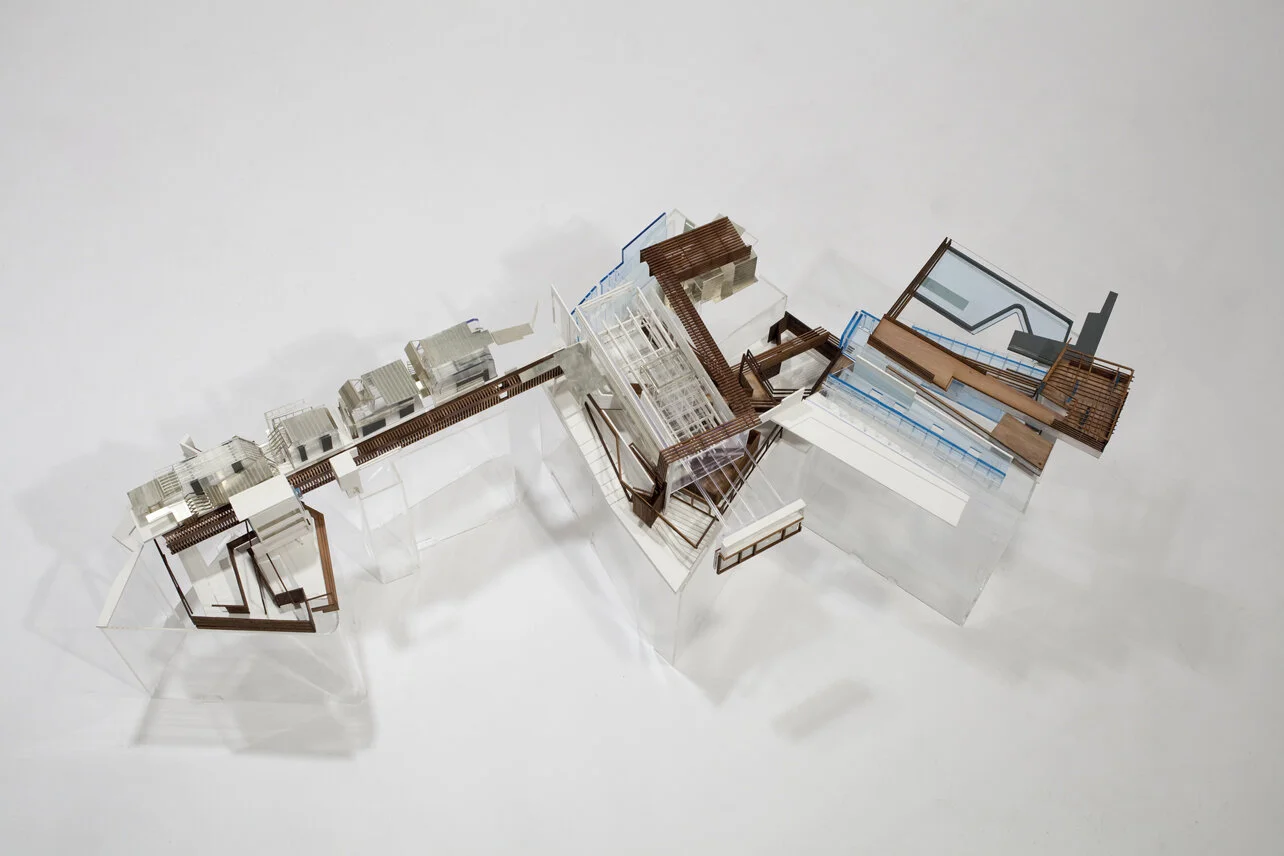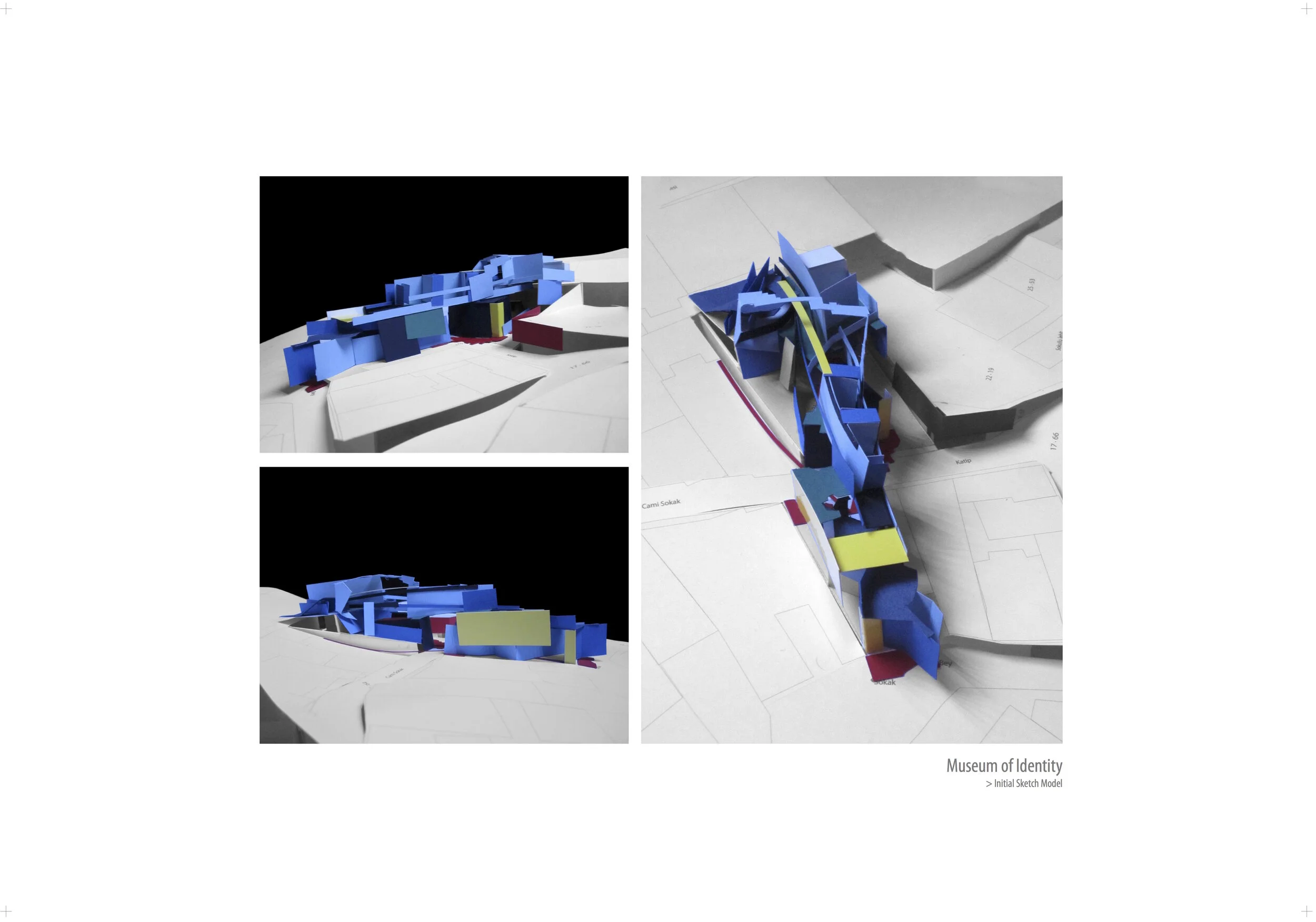Final Model
MUSEUM OF IDENTITY 2010
Understanding the city is crucial to the understanding of various aspects of individual and collective identities. Here, the city of Istanbul becomes a site for the exploration of a philosophical inquiry into place which questions the very way in which we locate ourselves within it. Once we recognise that space and social relations are made through each other, we can ascertain that the production of identity becomes central to spatial discourse.
Situated in Istanbul, the Museum of Identity, in an architectural intervention that utilises historical narrative to examine the consequences for subjectivity in an attempt to create a new basis for Individual Identity in Turkey. Further research into existing marginalised groups that reside on the periphery of what is now defined as a ‘Turkish National Identity’, initiated a conversation into the definition of difference as social conditioning in as much as it is about gender, race. etc. With the notion of architecture accommodating a place of Difference, attention is drawn to three particular groups: the Anatolian immigrants, the Alevis and the Donme, so that the Museum of Identity may be considered in relation to the culturally diverse landscape of the city.
The Museum is designed according to the parameters of four defined conceptual ‘Portals’; that investigate the spatial considerations of identity production. Using the Turkish film Uzak by Nuri Bilge Ceylan, as a case study, the role of the image, or the ‘movement image’ to be specific, has become a crucial part of this new spatial discussion. Therefore, the project was initiated by making a series of visual montages that articulate or consider interrelationships between the image, subject and the city and what may emerge out of their spatial intersection. These ‘Portals’ are defined as constructed spaces that act as allegorical representations of the city (window), psychic dwellings (bed), positional references (library) and technological spacing (television). By articulating these four lived spaces as ‘sites of difference’ an interesting reading of the city of Istanbul is generated and forms the basis for a proposed design intention.
















































